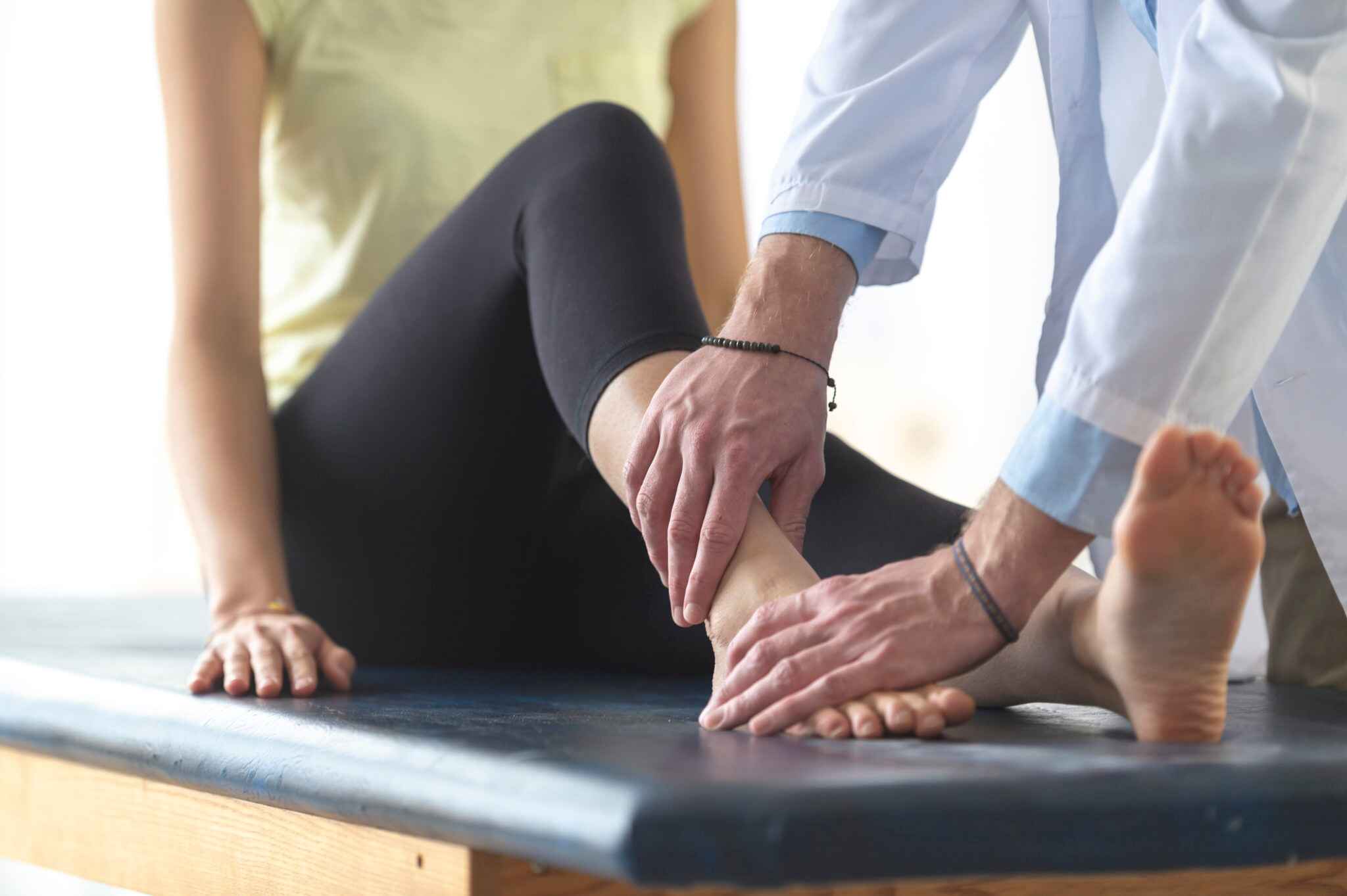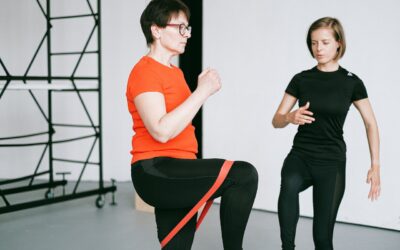If you are struggling with mobility following a surgical procedure, injury, or sickness; seeing a physical therapist for your recuperation could be beneficial. If physical therapy has been recommended to you, you’re probably full of questions about what awaits you and how best to get ready. Today, we explore what to wear to physical therapy and why. One common question that many individuals have before their physical therapy sessions is, “What should I wear to my physical therapy appointment?” It’s understandable that you would want to dress appropriately for your specific condition to ensure a smooth and effective therapy session that helps you achieve your rehabilitation goals. When it comes to outpatient orthopedic physical therapy; there could be exercises or treatments involving heat, cold, or electrical stimulation. It may be appropriate for the therapist to see the part of the body region being evaluated without restrictive clothing obstructing the view. What’s the most appropriate outfit for these outpatient physical therapy sessions to ensure ease of movement, evaluation, and effective treatment?
What To Wear To Physical Therapy? – Upper Body
If you’re attending a physical therapy session for your upper body, injuries such as in your neck, shoulders, arms, or back, it’s crucial to wear the correct garments. These garments should accommodate mobility and accessibility in these regions. Should neck discomfort be the issue, wear a T-shirt that grants your therapist visibility to your neck and upper back. If your hair is long, carrying a hair tie would be beneficial and allow it to be pulled out of the way. Also, taking off jewelry such as large, dangling earrings and necklaces to prevent skin irritation or getting in the therapists way. If your issue pertains to a shoulder ailment, be ready to potentially remove your upper body garments so that the therapist can conduct a thorough inspection of your shoulders, upper spine, and arms. For women, most wear a sports bra. However, if you are uncomfortable with removing your top, an alternative could be to wear a T-shirt or tank top that exposes your shoulders to allow the therapist to carry out the examination. In order to rehabilitate an injury involving your arm, wrist, or hand, it’s also recommended to wear a shirt that’s loose-fitting, leaving your arms uncovered. Shirts made from materials like spandex, which fit tightly, are not suitable. For men, wearing tight button down shirts may be restrictive if not removed. This is because such clothing may hinder the ability of your therapist to accurately assess and address your injury. Most orthopedic physical therapy evaluations require assessment of the region injured but also nearby regions as well. For example, if you came in with elbow pain, it’s completely reasonable for the therapist to want to observe the wrist and shoulder regions as well. In case of a back injury, it’s advisable to wear attire such as a T-shirt, a sports bra, and either shorts or pants with an elastic waistband. This allows your physical therapist to have a slight view of your lower spine or pelvis, if needed. Remember, your comfort is paramount, if asked to show a region you are uncomfortable with, you can always refuse.
What To Wear To Physical Therapy? – Lower Body
When attending physical therapy for a lower body issue, careful consideration should be given to your choice of attire. Your clothing should not only provide you with the freedom to exercise and move without restriction, but also allow your therapist to observe and physically examine, if necessary, your back, hips, knees, and legs. For example, if you came in with knee pain, it’s completely reasonable for the therapist to want to observe the ankle/foot and hip regions as well. For those experiencing hip discomfort, it’s essential that your therapist can freely manipulate and visually inspect your back and both hips. Shorts are most suitable, particularly those with an elastic waistband. You should also avoid wearing tight-fitting trousers that limit movement. Such clothing like jeans will absolutely prevent a thorough evaluation. As for ailments related to the knee, it is advisable to wear shorts. Despite the popularity of leggings, they may not be easily adjustable or rollable. Your chosen attire should ensure your therapist’s ability to observe and perform tests needed to your knees, thighs, and lower legs during the evaluation. If you’re dealing with an injury of the foot or ankle, it may be helpful to bring in the shoes you wear most or exercise in, so they can also be evaluated at your PT sessions. The therapist may need to observe your gait both with proper footwear and barefoot. For any lower limb issues, be prepared to engage in light to strenuous exercise during your PT sessions. It is advisable to wear trainers or some kind of sneaker. Steer clear of open-toed sandals or lightweight casual athletic shoes such as Crocs during these sessions. Wearing high heels to your PT appointments is strictly discouraged. However, if you are trying to return to wearing high heels, let the therapist know this is a goal.
What to Wear To Physical Therapy:
- Loose-fitting T-shirt
- Sports bra
- Hair tie
- Yoga pants
- Leggings: consider area needed to be seen
- Shorts or loose pants with a waistband
- Sneakers
What to Avoid At Physical Therapy:
- Turtleneck shirts
- Necklaces
- Long, dangling earrings
- Stockings/Nylons: let the therapist know if lymphedema is present
- Tight-fitting long-sleeved shirts
- Leggings: consider area needed to be seen
- Sandals
- Dress shoes
Other Factors to Consider
As you get ready for your physical therapy treatment sessions, it’s essential to consider your specific ailments. For instance, if you’re experiencing hip pain, ensure it is accessible to your therapist. If it’s a neck issue, your neck should be visible and reachable. Remember that your sessions will likely involve exercise, so opt for attire that is loose and comfortable, enabling free movement. If you’re arriving straight from work or a formal event, contact your physical therapy office staff about the availability of a changing room. It might be advisable to refrain from wearing any loose jewelry to your sessions. Items like necklaces or bracelets could become an obstruction. Also, be mindful of perfume or mists. Strong scents may increase sinus irritation or headaches for the therapist or others around you. A little forward planning before your physical therapy session ensures that you’re adequately dressed for your rehabilitation. This allows you to stay comfortable and concentrate on your recovery, aiding a quicker return to your regular activities.
The Bottom Line
The choice of what to wear to physical therapy may differ based on the particular type of therapy you’re undergoing. However, a general rule of thumb is to opt for loose, flexible clothes and sports shoes. If you have any doubts about the suitability of your chosen attire, don’t hesitate to contact your physical therapy center for advice. Bear in mind that physical therapy often involves exercises that may cause you to sweat. If you’re coming straight from work and need to change, ensure that there are facilities available at your therapist’s office for you to do so. Your comfort and safety during your physical therapy sessions are top priorities. It’s encouraged to consider your emotional comfort – feel free to discuss your comfort levels regarding physical contact and disrobing, where necessary, with your physical therapist. This dialogue can ensure that everyone’s boundaries are upheld and respected. If you have any questions in regards to pelvic floor therapy; give us a call or book an appointment with us today!


